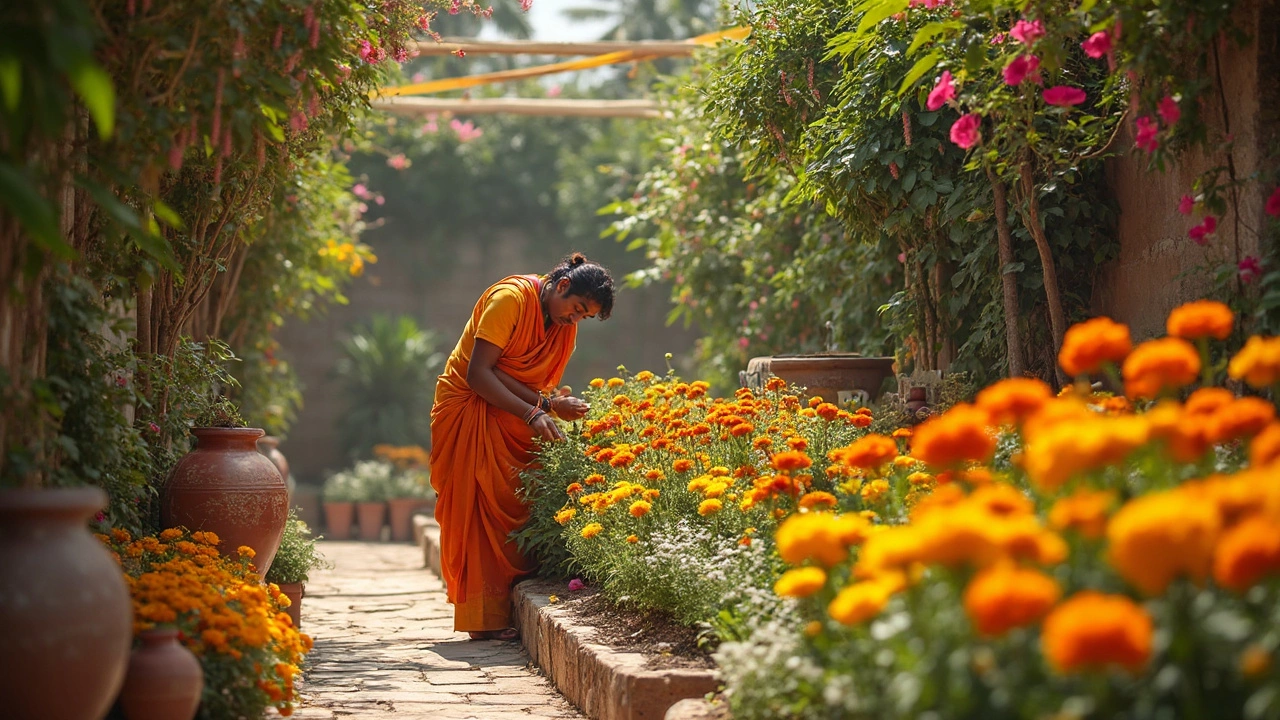Indian Vegetable Garden: Essential Tips for a Thriving Home Harvest
When working with Indian vegetable garden, a garden that grows vegetables using methods suited to Indian climates and soils. Also known as home veg garden India, it blends traditional wisdom with modern sustainability. One key piece of the puzzle is container garden watering, which focuses on how often and how much water you give potted plants. Another vital approach is no‑till gardening, a soil‑friendly method that keeps the earth undisturbed to boost microbial life. Together these practices shape a resilient garden that can handle India's diverse weather patterns.
Smart Water Management for Indian Veggies
Water is the lifeblood of any garden, but in India the monsoon can be erratic. Indian vegetable garden owners often wonder whether daily watering is a myth. The truth is that timing and volume matter more than frequency. By syncing watering with the soil’s moisture level, you cut waste and prevent root rot. This is where drip irrigation, a low‑pressure system that delivers water directly to the root zone, shines. Drip lines can be laid beneath mulch to reduce evaporation, and they pair perfectly with the precision needed for container garden watering. The result? Healthy plants, lower bills, and a garden that respects the water‑scarce reality of many Indian regions.
Keeping soil moist without drowning it is an art. When the ground feels hard and cracked, it's a signal that the soil needs rehydration. Soil rehydration techniques—like adding organic mulches, using compost teas, or lightly misting the surface—can quickly restore the needed moisture. These methods also improve the soil structure, letting water soak deeper rather than running off. Combining rehydration with drip irrigation ensures that each drop counts, especially during the scorching summer months when Indian vegetables are most vulnerable.
Choosing what to grow is just as crucial as how you water. Many Indian gardeners start with quick‑growing, heat‑tolerant veggies like okra, bitter gourd, and moth beans. Adding a splash of color with the easiest flowers to grow—such as marigolds or petunias—creates a pollinator-friendly environment and reduces pest pressure. Flowers also signal soil health, acting as bio‑indicators that guide you on when to amend the soil. Pairing these crops with companion planting strategies—like basil next to tomatoes—enhances flavor, deters insects, and maximizes garden space.
India’s regional climates dictate specific tweaks. In the north, cooler winters allow for leafy greens like spinach and mustard, while the humid south favors cucumbers and bottle‑gourd. Understanding the local monsoon calendar helps you time sowing and harvesting for peak yields. Traditional practices such as using cow dung as a natural fertilizer or building raised beds in flood‑prone areas still hold value. Modern tools—soil moisture sensors, seed‑starting kits, and mobile apps—can complement these age‑old techniques, giving you a hybrid approach that’s both effective and culturally resonant.
All these ideas come together in the post collection below, where you’ll find detailed guides on watering schedules, no‑till methods, drip‑irrigation setups, soil‑rehydration tricks, and crop‑selection tips. Dive into the articles to turn your Indian vegetable garden into a productive, low‑maintenance oasis that feeds your family and respects the environment.
Discovering Hindu Deities: Gods of Gardening and Fertility
In Hindu mythology, various deities are associated with nature, fertility, and growth, which can be linked to gardening. This article explores the Hindu gods correlated with plant life and cultivation. It also delves into the cultural significance of gardening in India. Tips for using this cultural knowledge to improve your own garden are woven throughout the narrative.
- manufacturing
- India
- food processing
- garden tips
- rice cultivation
- government schemes
- balcony garden
- urban gardening
- balcony gardening
- profitable business
- business ideas
- plastic manufacturing
- drip irrigation
- plant care
- steel manufacturing
- sustainable gardening
- startup ideas
- steel industry
- flower gardening
- textile manufacturers






